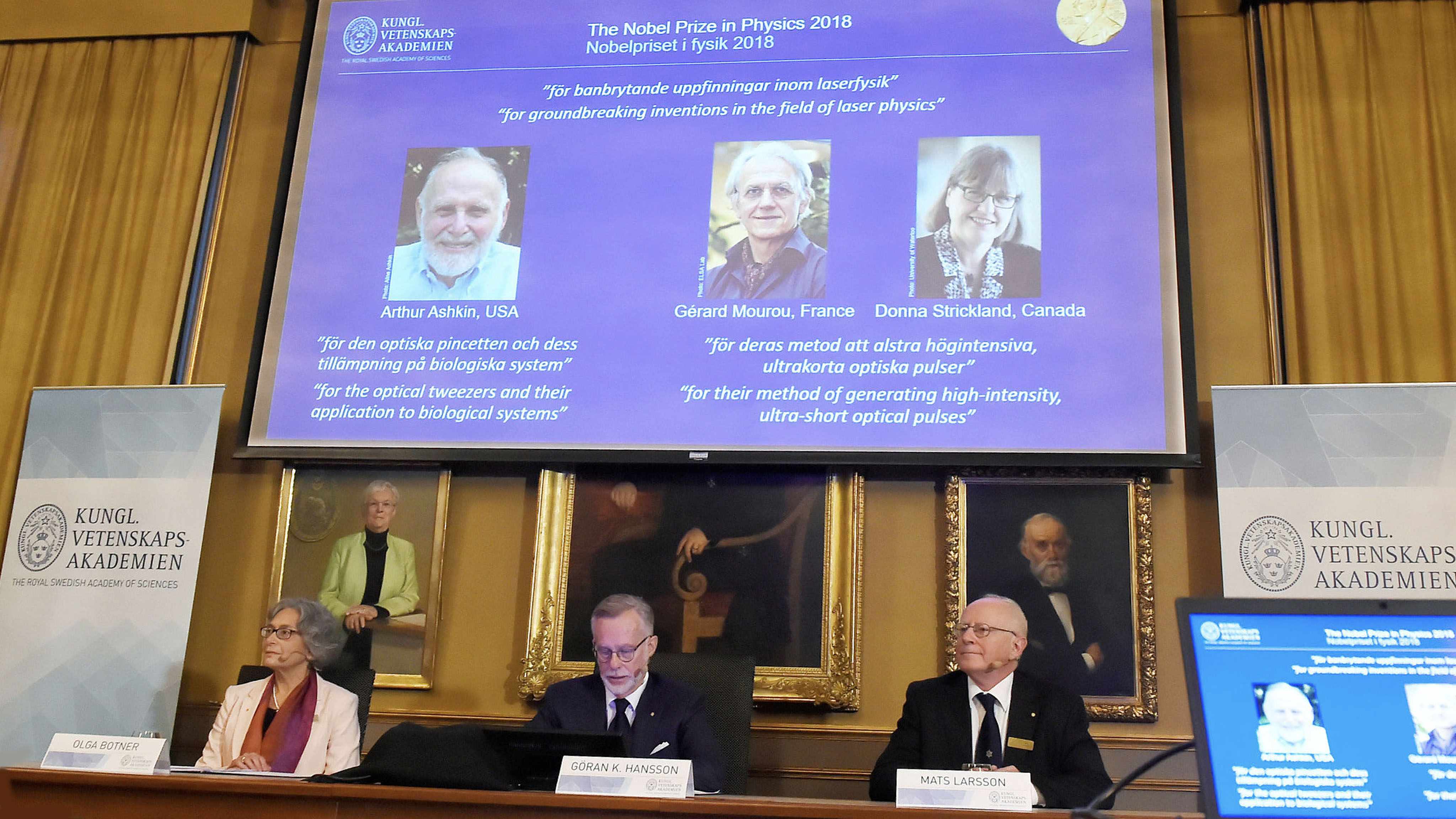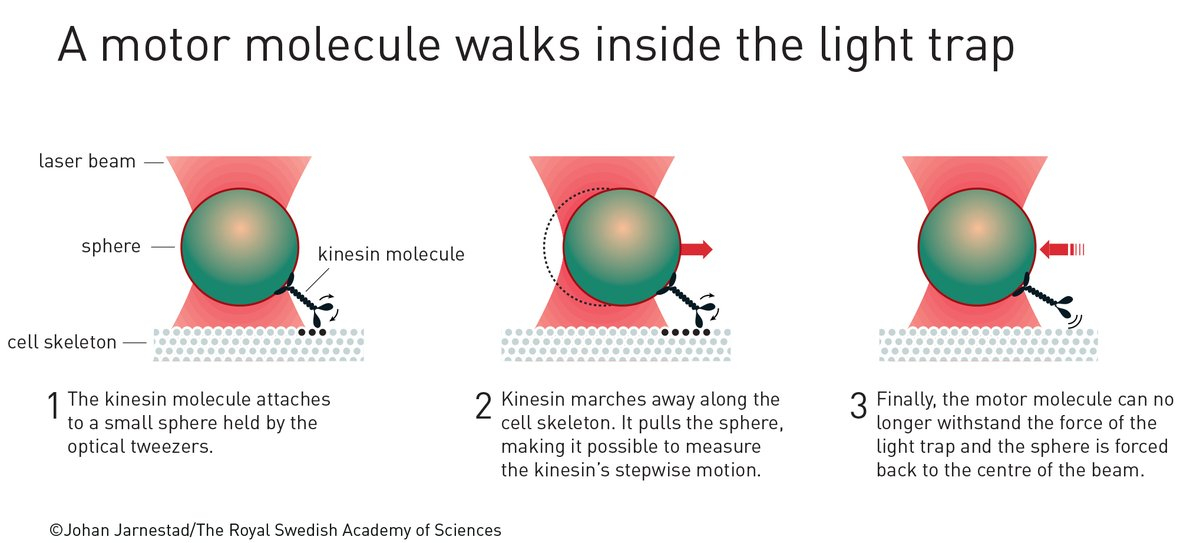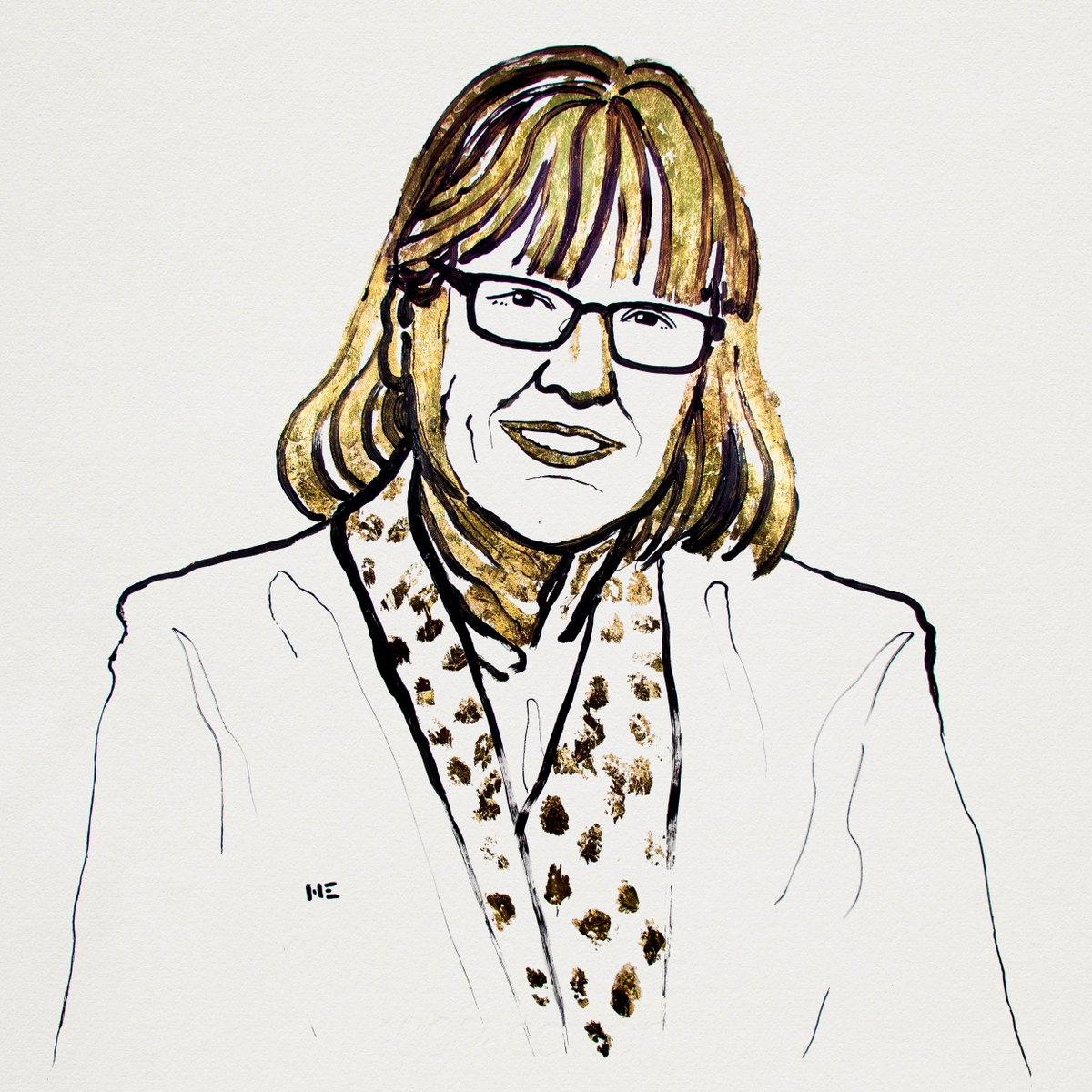
NobelPrize
17:56, 02-Oct-2018
Arthur Ashkin, Gerard Mourou and Donna Strickland awarded 2018 Nobel Prize in Physics
Updated
17:31, 05-Oct-2018
By Wang Xuejing and Gong Zhe
00:56

The Royal Swedish Academy of Sciences awarded on Tuesday the Nobel Prize in Physics 2018 to three scientists for their contribution to the field of laser physics.
US scientist Arthur Ashkin won half of the nine million Swedish kronor prize (almost 100,000 US dollars), while France's Gerard Mourou and Canada's Donna Stricland each received a quarter.
The laureates of the physics prize were announced a day after James P. Allison and Tasuku Honjo were awarded the Nobel Prize for Physiology or Medicine on Monday.
Scientific breakthroughs
Laser, short for "light amplification by stimulated emission of radiation," is a device that emits powerful light beams.
This year's laureates made two breakthroughs in the laser technology.
The first breakthrough is the work of Ashkin who managed to create a tool called "optical tweezer" that can be used to examine tiny lifeforms and even modify them.

A visual illustration of Ashkin's finding. /Twitter Screenshot
A visual illustration of Ashkin's finding. /Twitter Screenshot
This is a powerful tool for further biology studies.
The second, by Mourou and Strickland, is called chirped pulse amplification (CPA) and is widely used to treat nearsightedness.
It's also being used by technicians all over the world to study cancer treatment and build tiny machines.

A visual illustration of CPA. /Twitter Screenshot
A visual illustration of CPA. /Twitter Screenshot
One of the important characteristics of this year's physics award is that both findings have already been put to practical use and are helping people lead a better life.
A breakthrough of a different kind
Strickland is the third woman to ever receive the physics award, a fact that surprises her.
"I thought there might be more ... Obviously we need to celebrate," she said in a phone interview with reporters at the Swedish Academy.

An illustration of Strickland by the Nobel Assembly. /Twitter Screenshot
An illustration of Strickland by the Nobel Assembly. /Twitter Screenshot
The disparity between male and female laureates of the Nobel prize has been debated for years. But Olga Botner, a female physics professor and member of the Nobel Physics Committee, gave an explanation to the situation.
"[The number of female laureates] reflects the number of women in the science field two or three decades back in time," she told reporters during the press conference.

SITEMAP
Copyright © 2018 CGTN. Beijing ICP prepared NO.16065310-3
Copyright © 2018 CGTN. Beijing ICP prepared NO.16065310-3